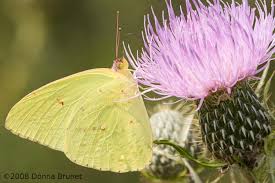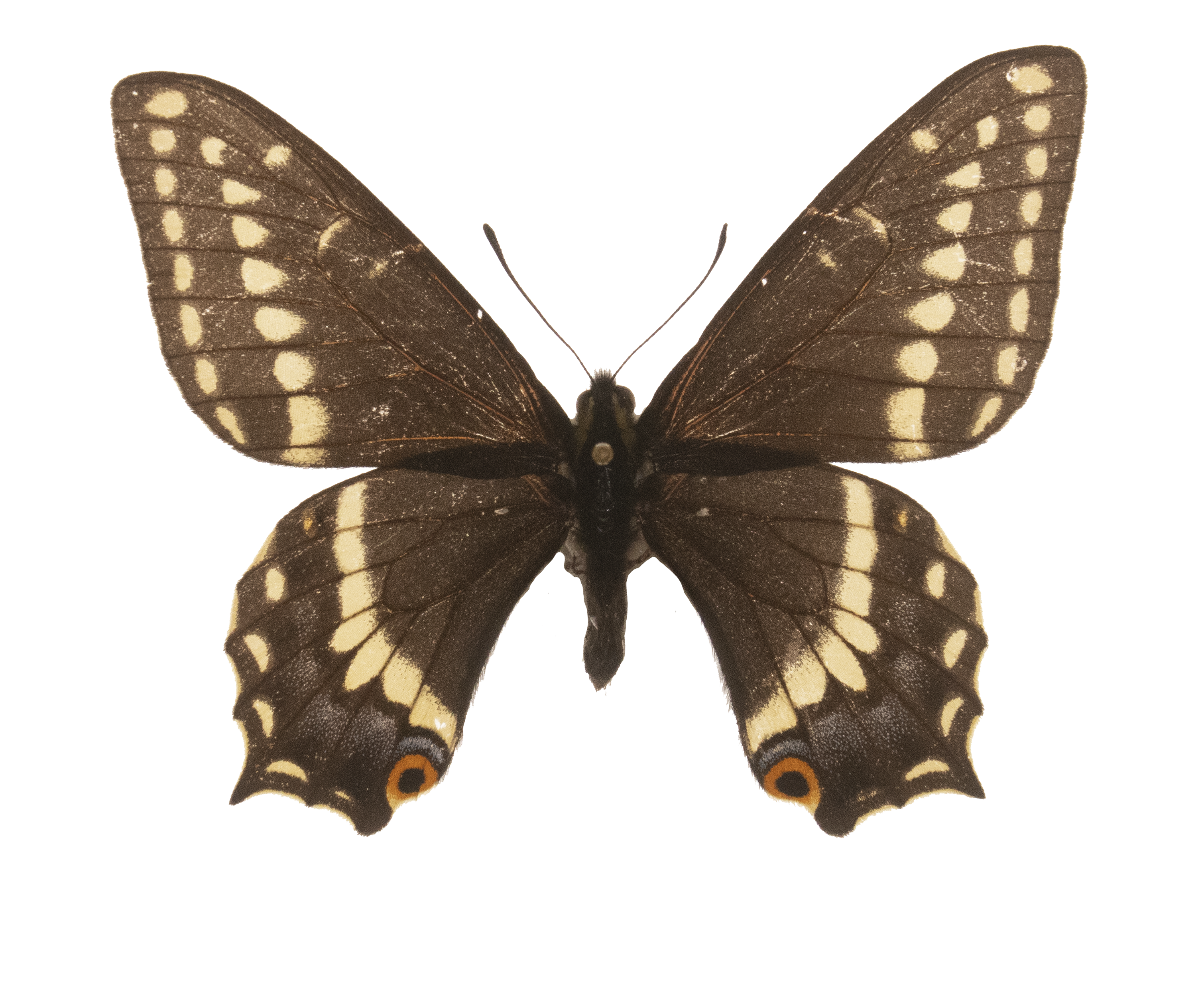Last Sunday (July 19) I was out in the yard here at home and noticed a larger than usual whiteish butterfly hanging around our Sennae. After sneaking up on it (if you can imagine that) to get a better view I found it to be an albinic Cloudless Sulphur (Phoebis sennae). I suspect it was a female so I will be on the lookout for larvae on that plant and its other preferred host Partridge Pea which I have growing elsewhere in the yard. A great “Big Year” addition without having to travel to far. YTD total = 98.
Hearing of Bates Crescent and Indra Swallowtail sightings in the Pine Ridge and still hoping to find marsh and Little Glassywing Skippers at the Niobrara Valley Preserve Jen and I embarked on another road trip Tuesday night.
After an overnight stay in Scottsbluff Wednesday morning we made our way up to Gilbert-Baker State Wildlife Management Area north of Harrison to look for the crescent. Beebalm (Monarda sp) and hairy verbena (Verbena stricta) were in full bloom and while searching for the elusive crescent we encountered quite a few fritillaries, mostly Aphrodite but with one Regal and several others that looked darker than the rest. Thinking they were possibly Coronis Fritillaries I took one specimen to examine in closer detail back home. We also encountered several second generation Afranius Duskywings (Erynnis afranius – see May 28 post) as well as a few other common species. After several hours there searching for Bate’s without success we headed to Pant’s Butte – a reliable Indra Swallowtail locale. After selecting a spot on high ground a safe distance from the precipice (my safety coordinator was along) I began surveying the landscape below. The usual Nebraska wind (a little more than desired) was at my back and suddenly I was ambushed from behind by the Indra Swallowtail (Papilio indra) I’d been searching for. Over the ledge he went leaving me to wonder what must that be like. But not wondering hard enough to take up hang gliding off of cliffs. With no more prospects for the day and a drive to Valentine left on the agenda we concluded the day’s butterfly hunt with one, maybe two additional species – YTD total 99, maybe 100 if Coronis pans out!!
At the Niobrara River we resumed our search for skippers. Jonathan and Bennett Nikkila had taken pictures of a couple of Little Glassywing Skippers there back on July 11 and I still harbored hopes of finding Dion and Two Spotted Skippers at a marshy location there. Upon our arrival we scouted out a marsh and had a brief (3 seconds?) encounter with a sootywing. The habitat and its appearance didn’t seem right for the Common Sootywing and I’m about 60% sure it was a Scalloped (Staphylus hayhurstii). But 60% is not 100% so no counting that. To bad as I hadn’t seen one of those in years. We ended up not finding any of the desired skippers but did see several Giant Swallowtails from a resident population centered around Prickly Ash (their larval hostplant) which is locally abundant there. Oh, and lots of ticks – an occupational hazard. So with no new species for the day (but some good scenery and exercise) we turned on the A/C and headed into the south wind to home.
Cloudless Sulphur – This large sulphur strays into Nebraska from permanent gulf coast populations in varying numbers nearly every year, usually in the later stages of the summer. It has been most often found in the southern portions of the state, particularly in the southeast where it’s preferred larval hostplants Partridge Pea and Wild Sennae (Cassia fasciculata and C. marilandica) are established. Being a migrant it may show up anywhere.

Cloudless Sulphur – photo from nature.mdc.mo.gov 
Range of Cloudless Sulphur in Nebraska
Indra Swallowtail – In Nebraska this butterfly can been found in spring and midsummer flying in the steep canyon lands of Sioux and Banner counties where its larvae feed on Threadleaf Musineon (Musineon tenuifolium) which grows out of rocky ledges and nearly vertical slopes. Western Nebraska is at the extreme eastern edge of this species range.

Indra Swallowtail 
Indra Swallowtail larva – freshly molted

Thread leaf Musineon – Indra Swallowtail larval hostplant in Nebraska

Distribution of Indra Swallowtail races
While certainly not the prettiest butterfly (my opinion) this swallowtail has a devoted cult following, probably due to its rarity and the difficulty in accessing the extreme environments it calls home. Some of those include the Panamint Mountains of Death Valley and the Grand Canyon, both of which fall almost entirely within National Park boundaries where no collecting is allowed. This has led to a black market for these butterflies. An interesting article (The Great Butterfly Bust) on this sordid trade appeared in the March-April 1996 issue of Audubon magazine.
Upon my arrival back home I was able to spend a little more time examining my “Coronis Fritillary” and decided I wasn’t comfortable with that determination so for the time being I guess it’s a darker than usual Aphrodite. So rather than getting to 100 the YTD total is 99.
Thanks to Cathy, Elizabeth, James and Ann for their input/photos – very much appreciated.
A little housekeeping – in Saturday’s World Herald article a Tawny Edged Skipper was identified as a Tawny Emperor. Jon and I do know the difference – a mix up somewhere. That’s something I always check in published material. Funny how easy that can happen!

I appreciate the photo of the larva. When I spot a larva I want to know which butterfly it will become.